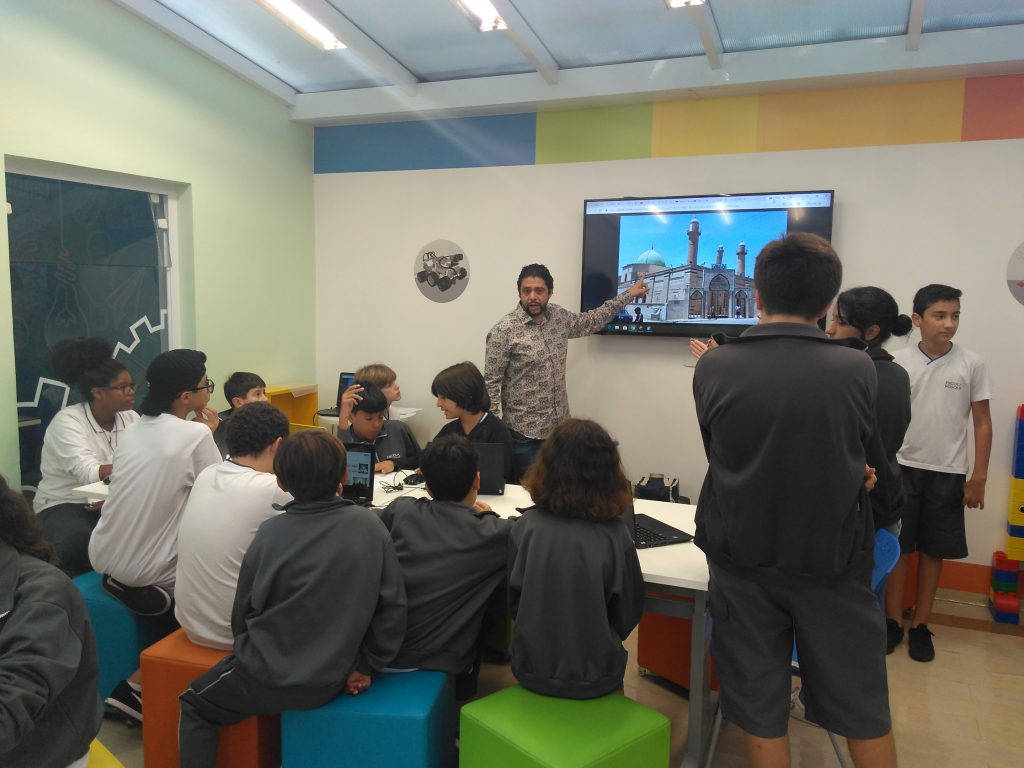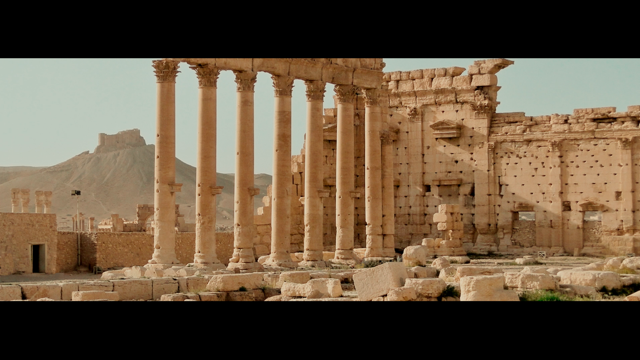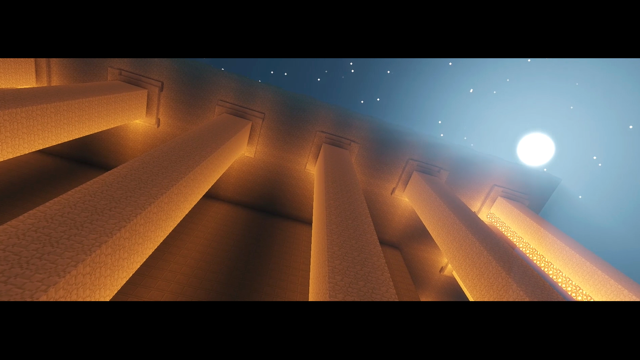São Paulo – “Technology helps you to look into the future and retrieve the past,” said professor Francisco Tupy (pictured), the mastermind behind educational game project History Blocks. The game recreates United Nations Education, Scientific and Cultural Organization (UNESCO) world heritage sites that have been destroyed during fighting in Iraq, Syria and Afghanistan.
The game was adopted by Brazilian schools last May, and promotion will be stepped up from August onwards so more institutions can embrace it. The game is an educational initiative from Microsoft’s Minecraft Education Edition, which utilizes it for interdisciplinary classroom activities in partnership with UNESCO – which is an arm of the United Nations (UN).
Fifty-plus countries have adopted the game, which has ‘ambassadors’ in Arab countries like Tunisia, Qatar, Iraq and Bahrain. In Brazil, History Blocks is in use in schools in São Paulo, Rio de Janeiro and Ceará. “Brazilian schools have already become aware of History Blocks, and they are beginning to incorporate it into their activity plans going into the second half,” Tupy told ANBA.
Francisco Tupy é is a Brazilian-born, Saudi-descendant professor with a degree in Geography from the University of São Paulo (USP). He also holds a master’s in Game Design and a doctorate degree in Communication Applied to Games, from the USP’s School of Communication and Arts (ECA). For his doctorate thesis he delved into Minecraft applied to communication.
“UNESCO had the initiative to recreate heritage sites with Minecraft, and it invited me to develop the game because of my profile. We mapped out world heritage sites in the Middle East that were destroyed by fighting, and we invited the kids to rebuild those sites,” said Tupy, who’s the pedagogical coordinator and world leader for History Blocks.
A pedagogical plan was created based on the UN Sustainable Development Goals and on the pillars of education. “We wanted to build a game that would be helpful in solving problems and spreading awareness about humanity’s responsibility towards its heritage sites. The project uses schoolteachers as moderators, and it motivates students to do research on history, math, geography and anthropology. The goal is to build global empathy, to get them to recognize themselves in others, and to grasp the variety of cultures and behaviors in the world. And in rebuilding that heritage, the game helps build knowledge, and it can even be valuable as historical documentation,” the professor said.
According to Tupy, “Minecraft is limited only by your creativity.” He believes the game is a toolf or change, which enables group work and focuses on reconstruction while using technology to constructive ends. It also enhances young people’s sense of responsibility in the face of tragedy. “I was delighted to see how they did research on the sites, and their curiosity about the world.”
Classroom discussions dealt with the disasters in Rio’s National Museum, São Paulo’s Museum of the Portuguese Language, and Paris’ Notre Dame Cathedral. “We discussed what makes a UNESCO world heritage site,” he said. These are natural or man-built sites deemed by the science community as being incomparable and crucially important to humanity.
Escola Bosque
São Paulo’s Escola Bosque was an early adopter of History Blocks, for an interdisciplinary activity spanning four classes and involving math and history teachers and students aged 10 to 14. Primary school students recreated the Temple of Bel, in Syria, and the Great Mosque of al-Nuri, in Iraq.
“The project was very rewarding. Everyone came together, and it was a more fun way of learning,” said 13-year-old 8th-grade student Bruna Macruz. She had been playing Minecraft since she was five. “I’m not much of a history fan, but the game sparked my curiosity to learn more about the sites, especially the Temple of Bel, in Syria,” she said.

Calculations were another highlight of the experience. Escola Bosque math teacher Marisa Resende said “Minecraft uses several math tools. It involves calculus, geometry, measurements and proportions.” Minecraft relies on one single geometric shape – cubic blocks. Building the dome of the Great Mosque of al-Nuri using those cubes was a challenge to students. “It’s interesting for students to realize that the math they study in the classroom applies to everyday life and real problem-solving. The fact that the game makes them realize that is very enriching,” said Resende.
According to Escola Bosque pedagogical coordinator Fátima Queiroz, each of the 15 participating students had a computer, but they all worked together online. “It was enriching and surprising to see them do the activity, which involved geometry, logic and history. The idea is to build awareness about the destroyed sites, and to prompt reflection on the importance of preserving these sites,” said Queiroz.
Bruna is considering going to college for programming or marketing, “something to do with digital.” In addition to learning the actual game, she said the experience was important when it comes to learning teamwork, developing organization and management skills, and interacting with students of various ages.
Translated by Gabriel Pomerancblum








